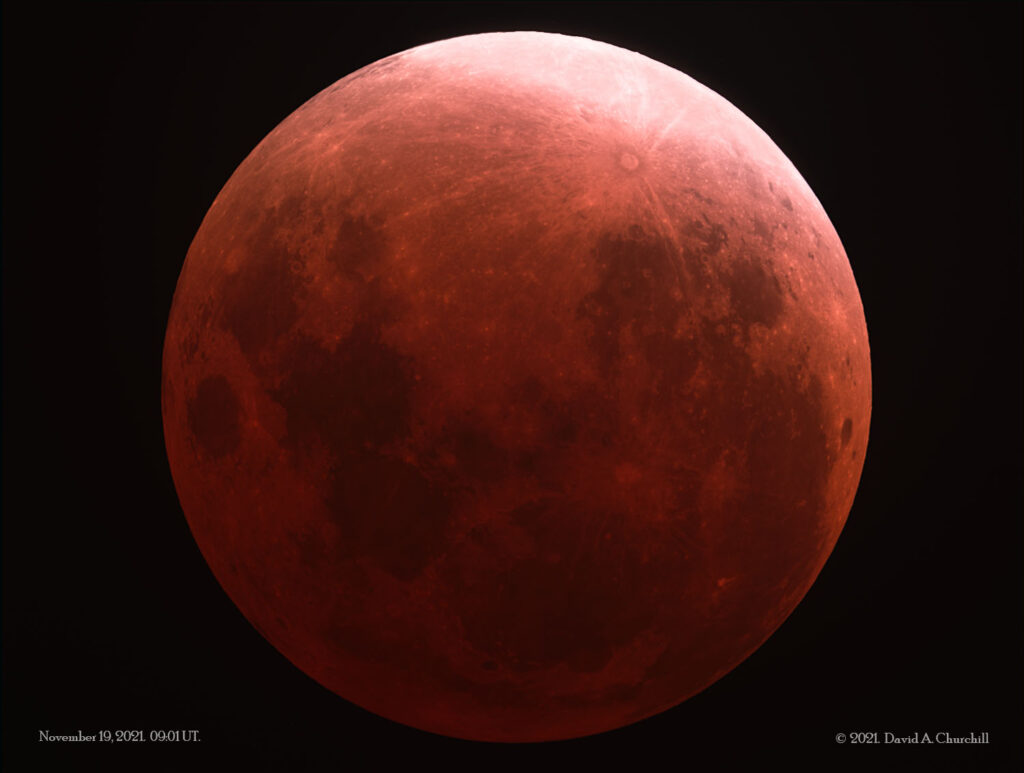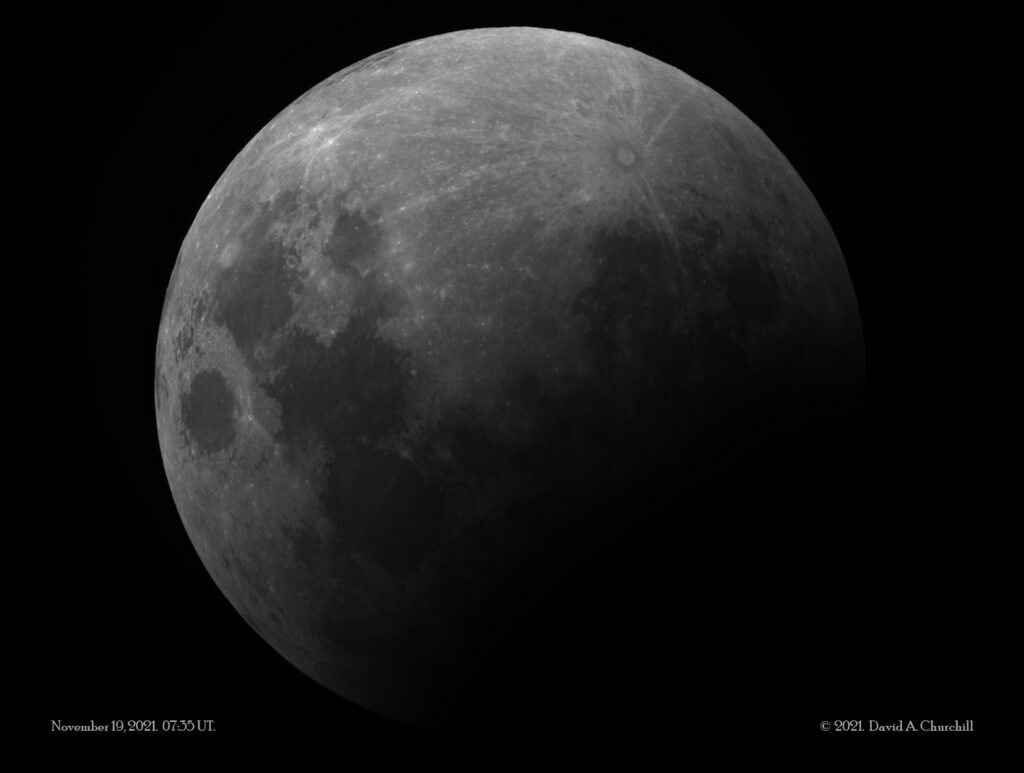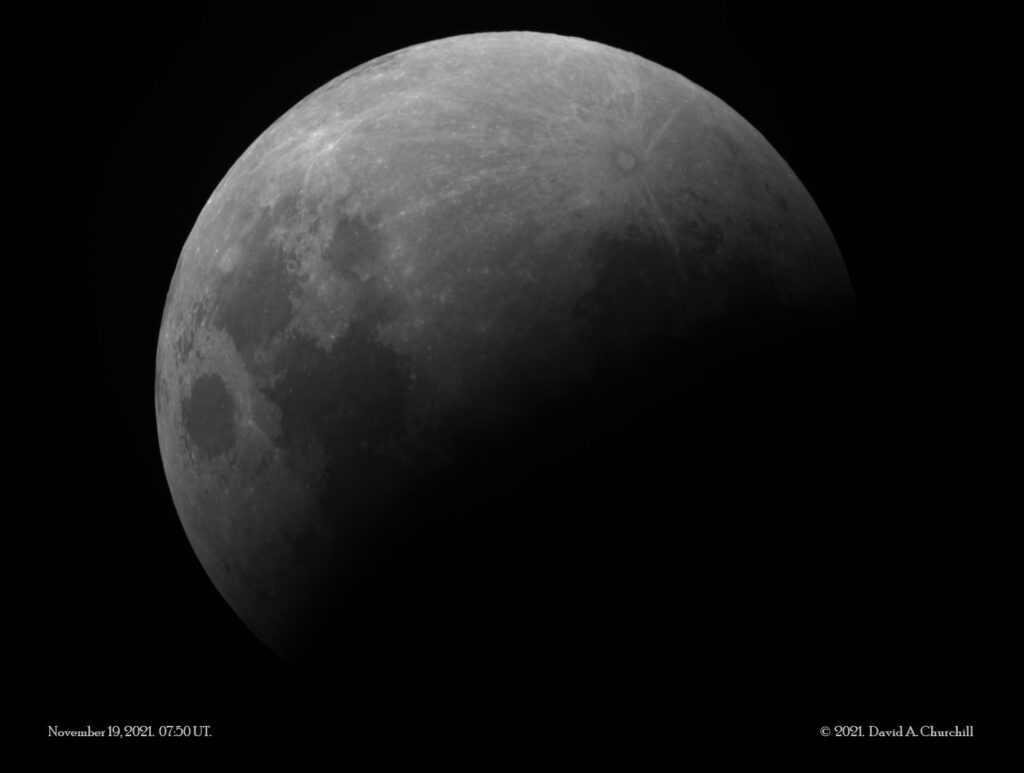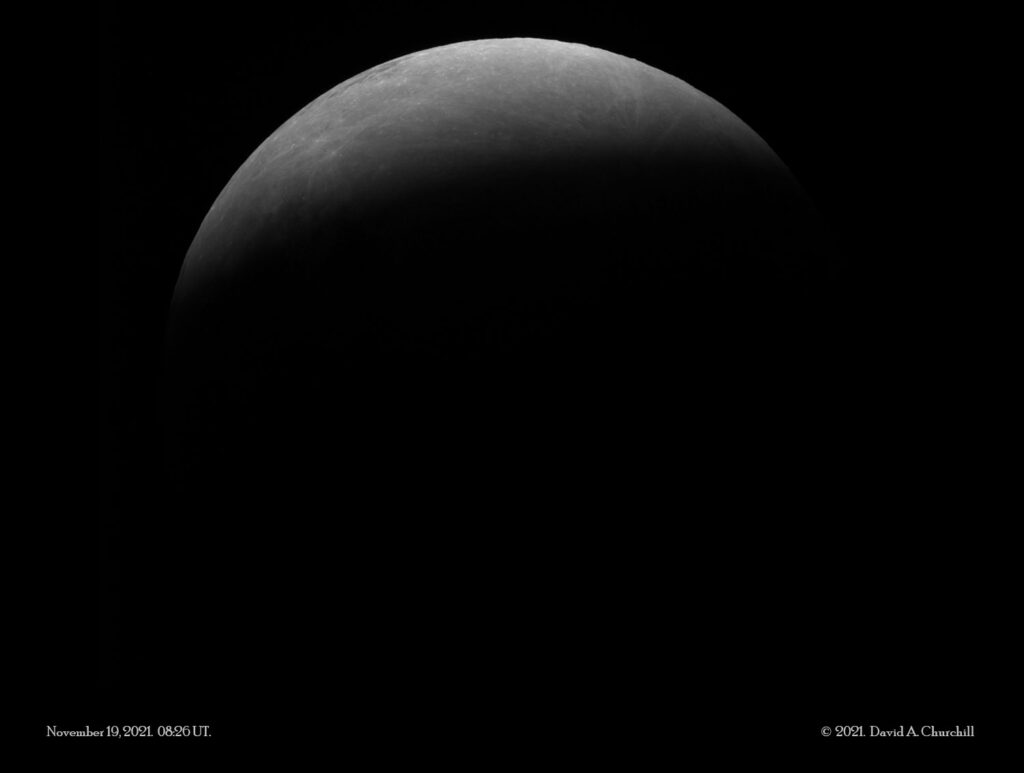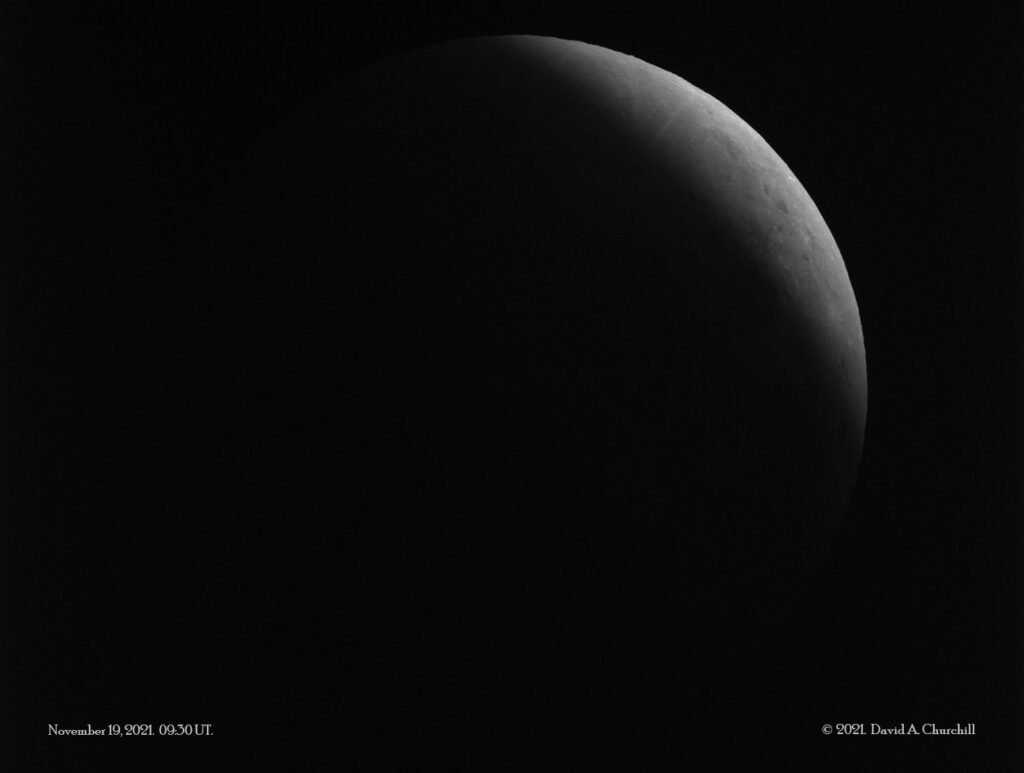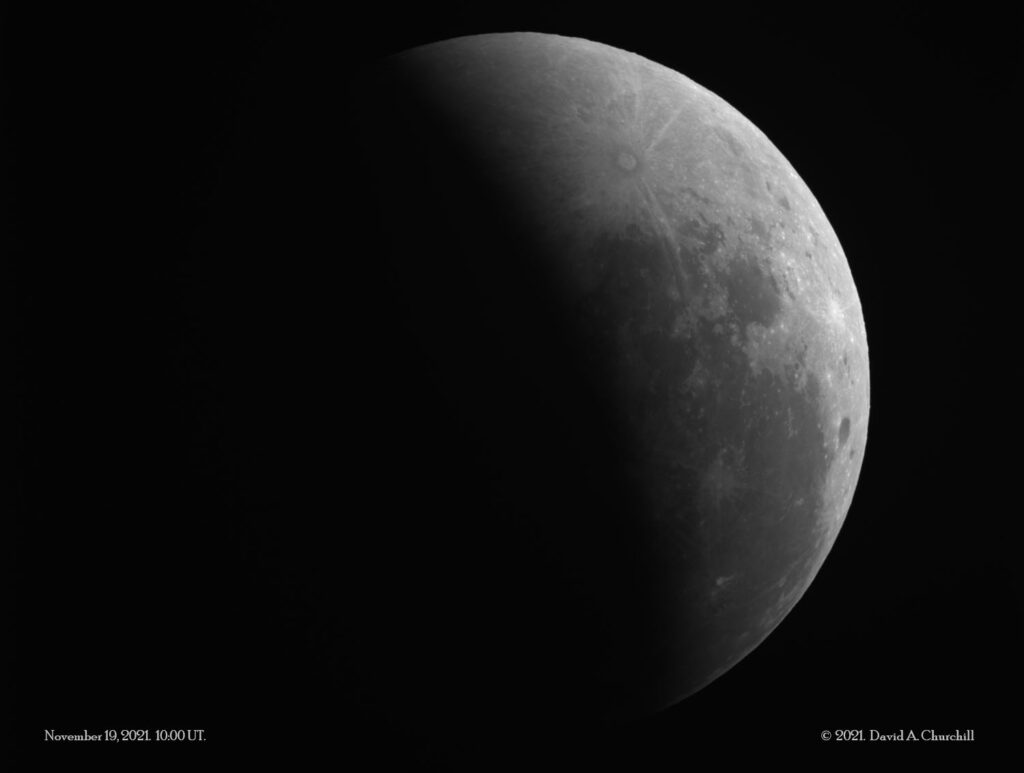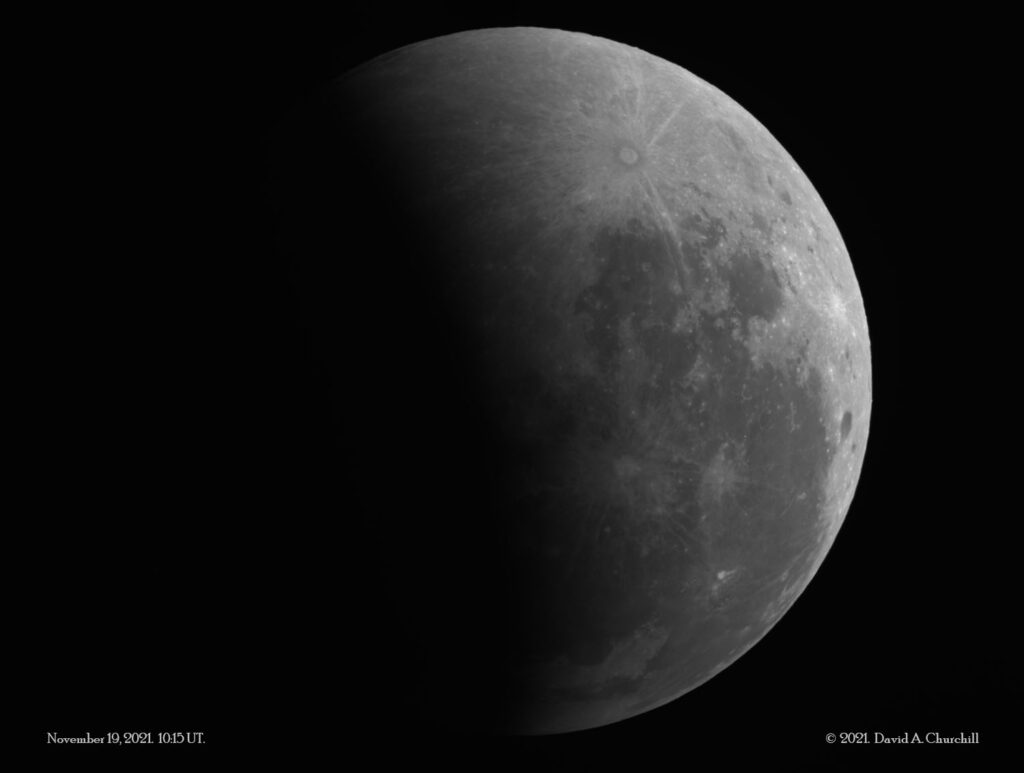Partial Lunar Eclipse
2021, November 19
- Overview
- Equipment
- Details
A Lunar Eclipse occurs when the Sun, Earth, and the Moon (in that order) line up and most of the Moon moves through the Earth’s umbra, the darkest part of its shadow. This particular Lunar eclipse is almost total. At mid-eclipse, 97% of the Moon will be covered by Earth’s umbra.
As well as appearing dark, the Moon appears reddish during maximum eclipse. This is because Earth’s atmosphere bends some of the Sun’s light rays into Earth’s shadow, and because air preferentially scatters the shorter (bluer) wavelengths of that light, it produces a reddening effect while darkening the visible Lunar surface.
As well as appearing dark, the Moon appears reddish during maximum eclipse. This is because Earth’s atmosphere bends some of the Sun’s light rays into Earth’s shadow, and because air preferentially scatters the shorter (bluer) wavelengths of that light, it produces a reddening effect while darkening the visible Lunar surface.
Telescope: Astro Physics 175EDF f8.3
Mount: Astro Physics 3600GTO “El Capitan”
Camera: SBIG STT8300
Maximum Eclipse: RGB – 5 seconds each.
Partial Phases: OIII Filter to reduce image brightness.
Data Imaged remotely on November 19, 2021.
Data acquisition & Processing by David Churchill.
Partial Lunar Eclipse of 2021 Nov 19
Greatest Eclipse: 09:02:53.1 UT.
Umbral Magnitude: 0.9742 (97.42%)
Saros Series: 126, Member: 46 of 72
Eclipse Contacts: P1: 06:02:09 UT. U1: 07:18:41 UT. U4: 10:47:04 UT, P4: 12:03:38 UT.
Eclipse Durations: Penumbral: 06h 01m 29s, Umbral: 03h 28m 23s

